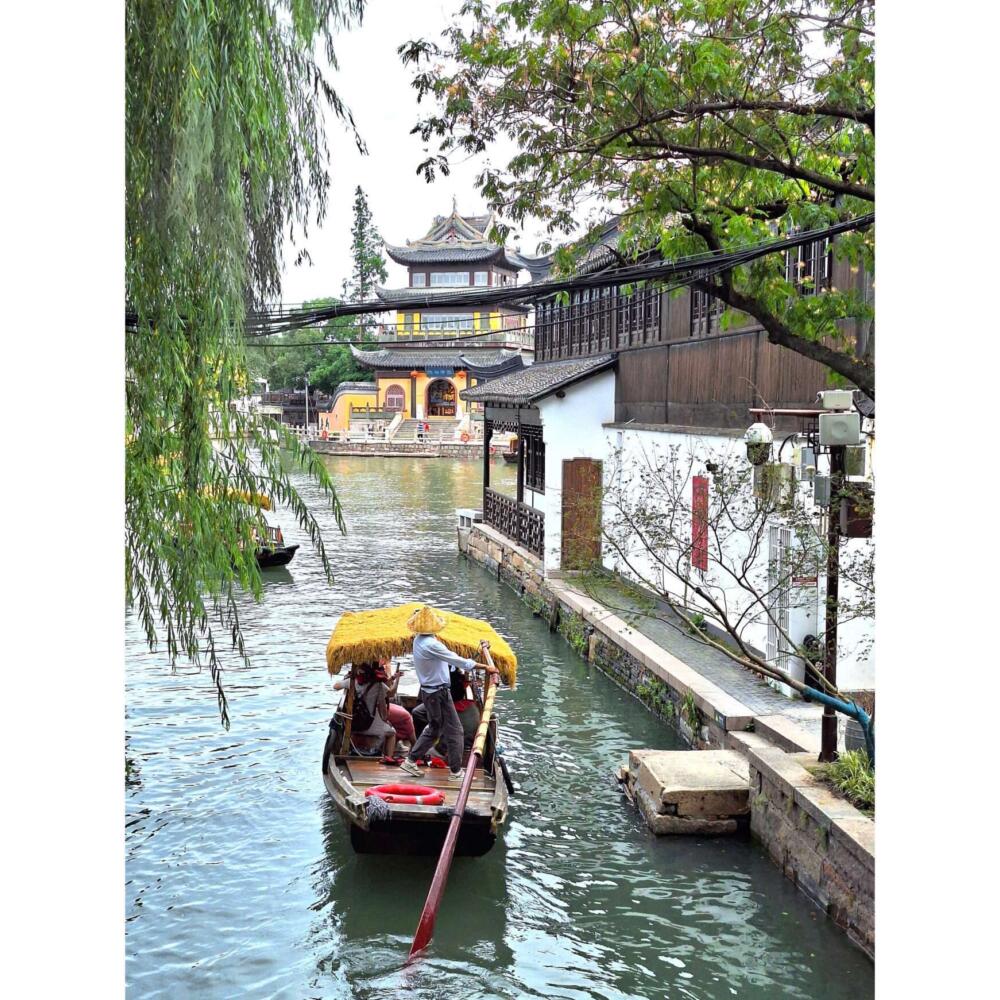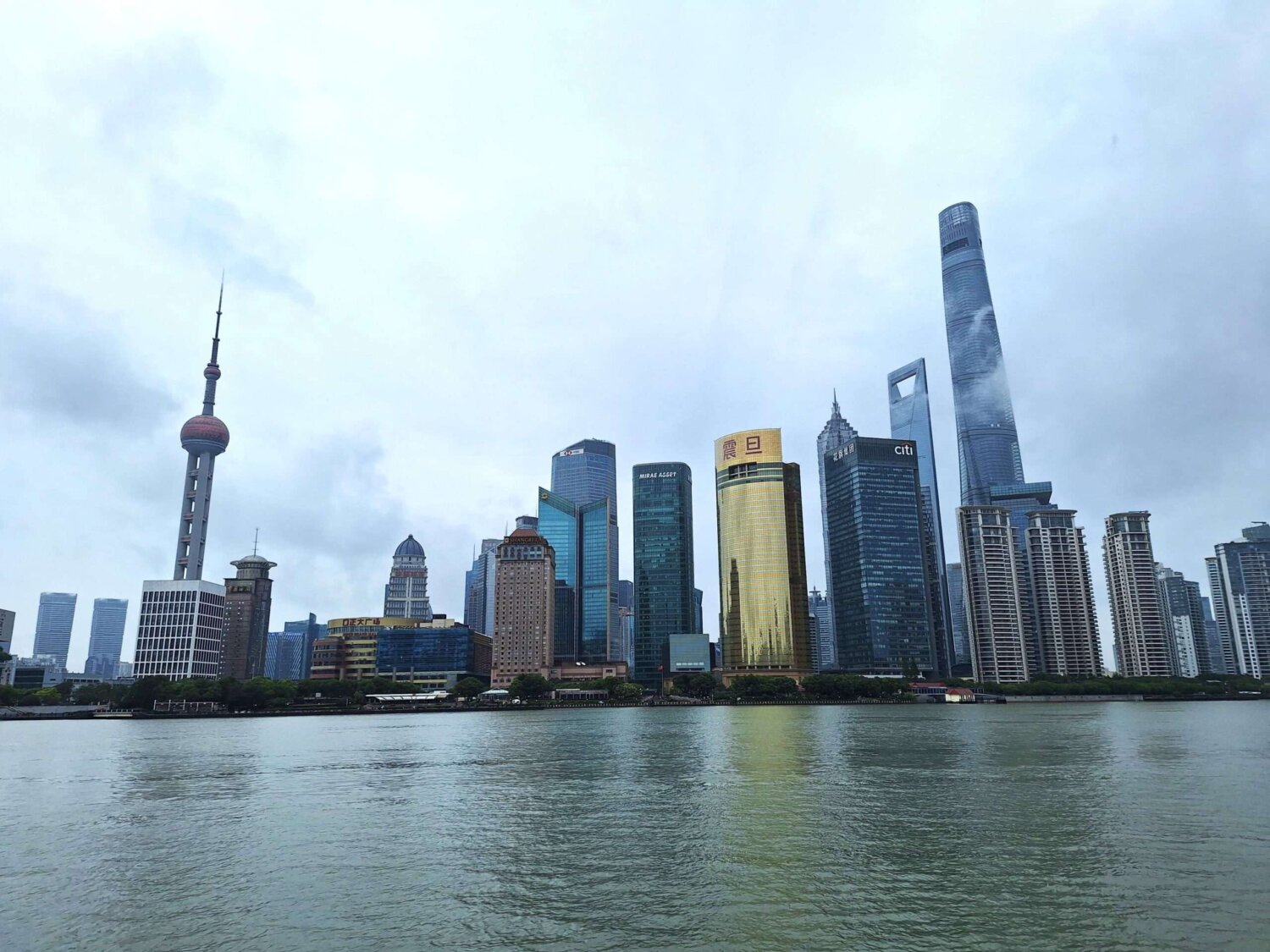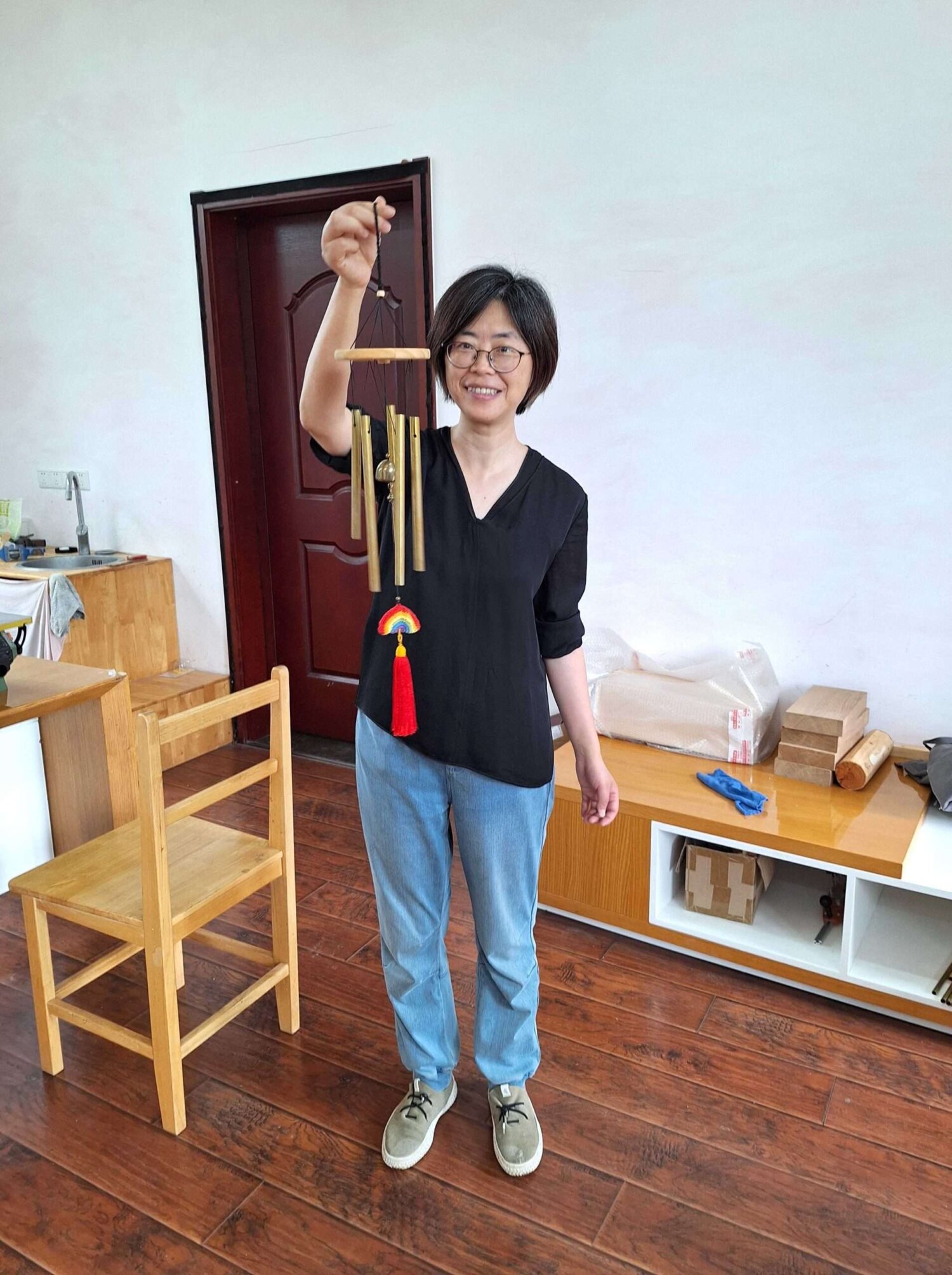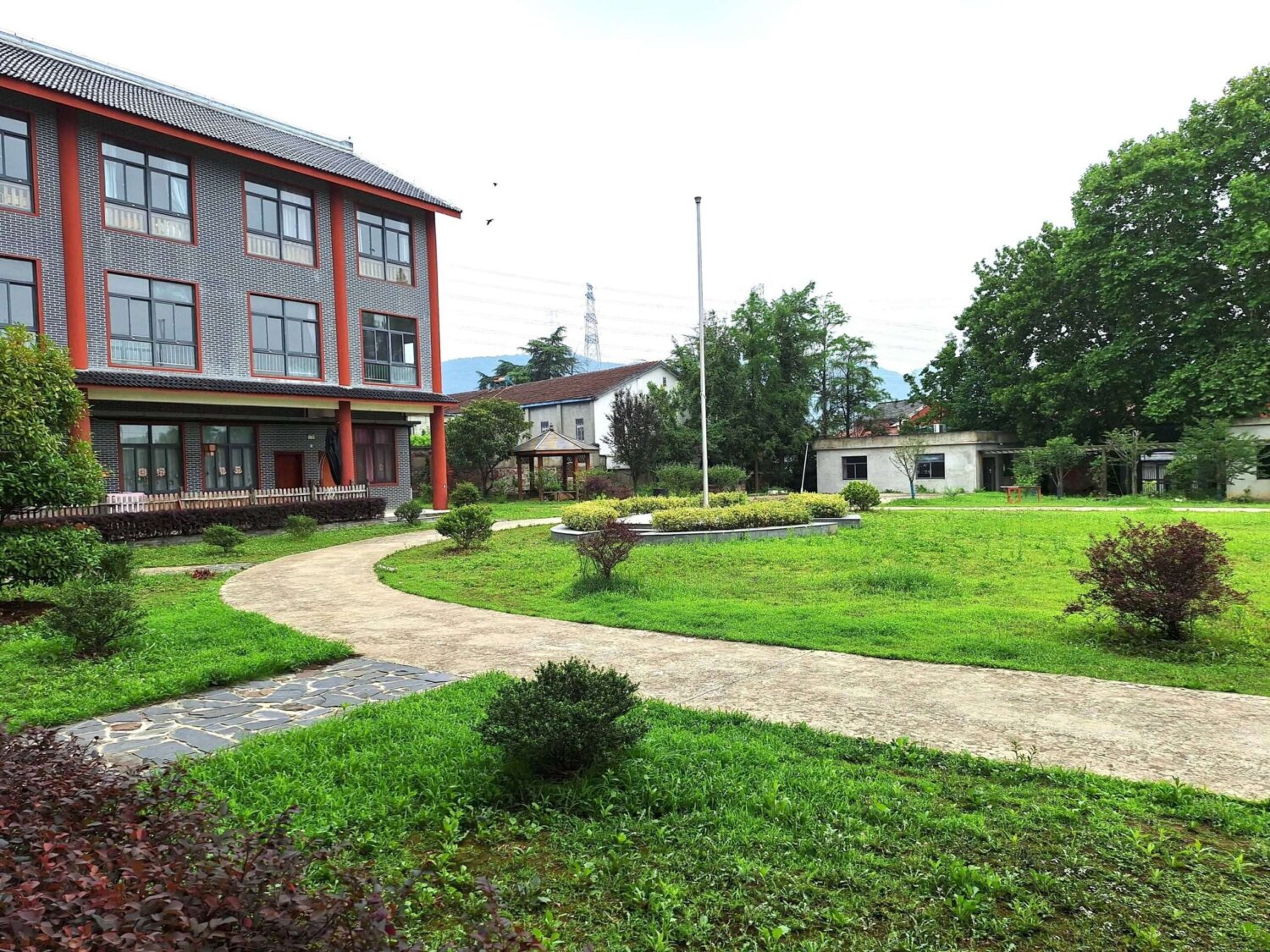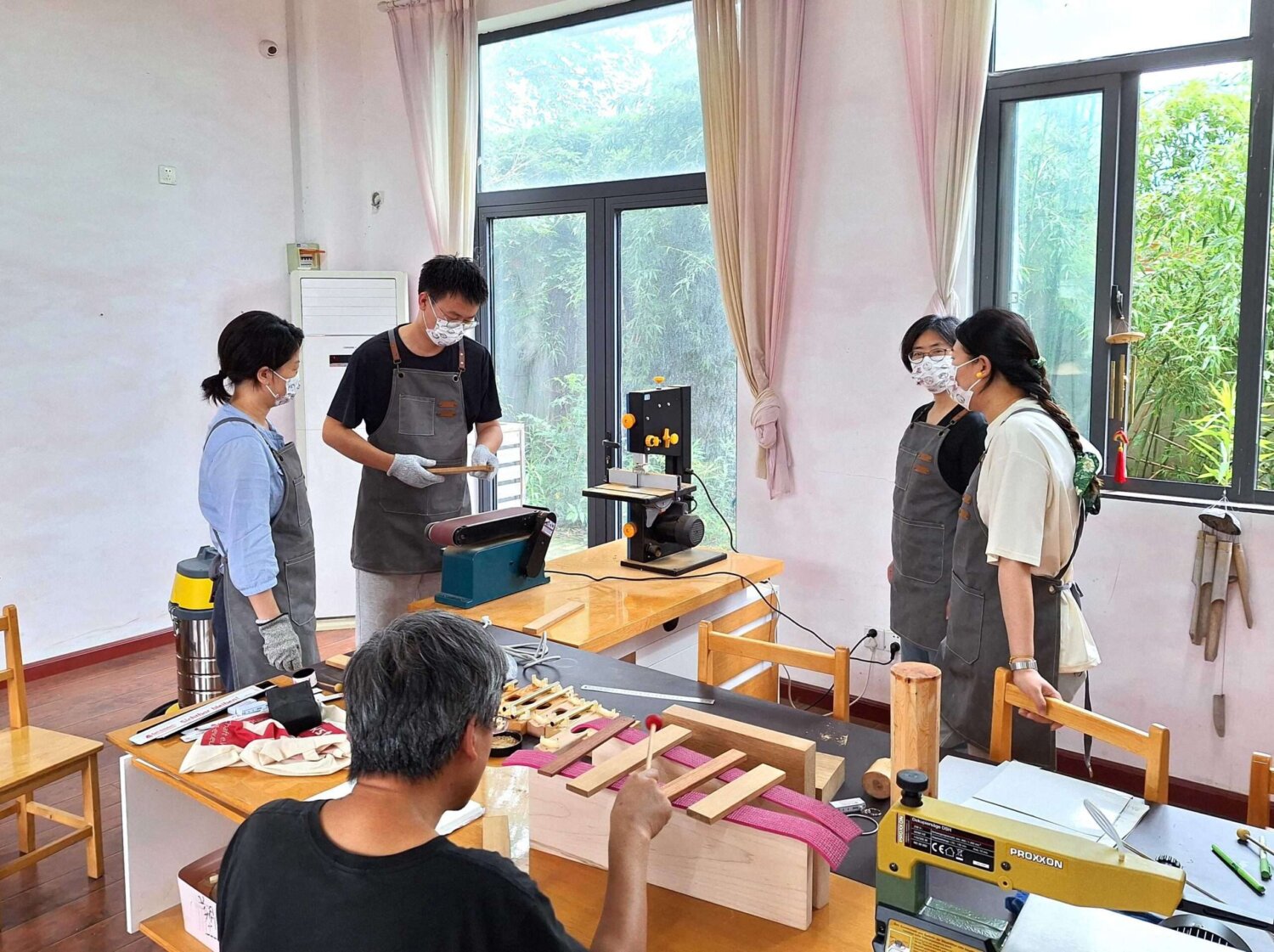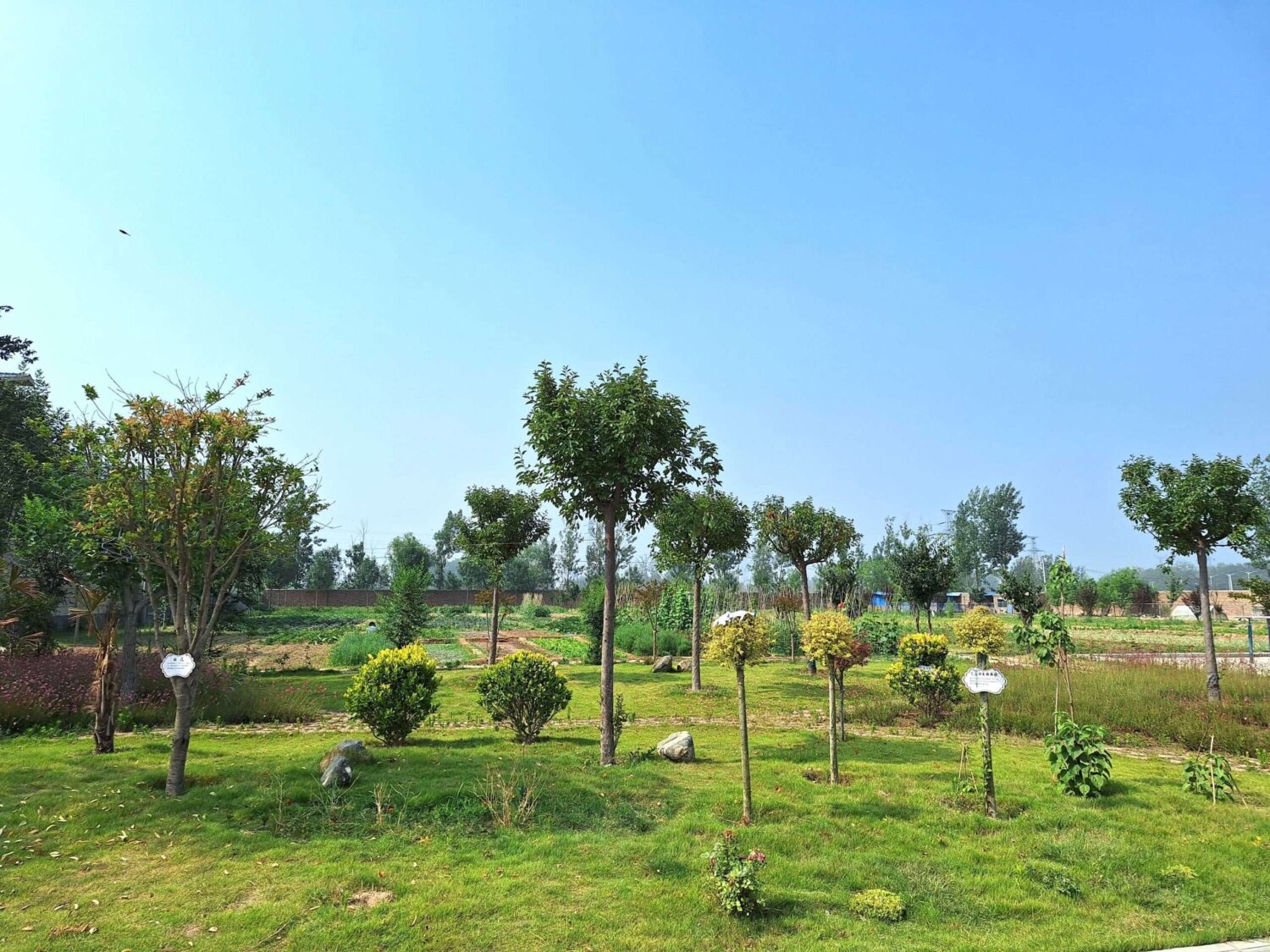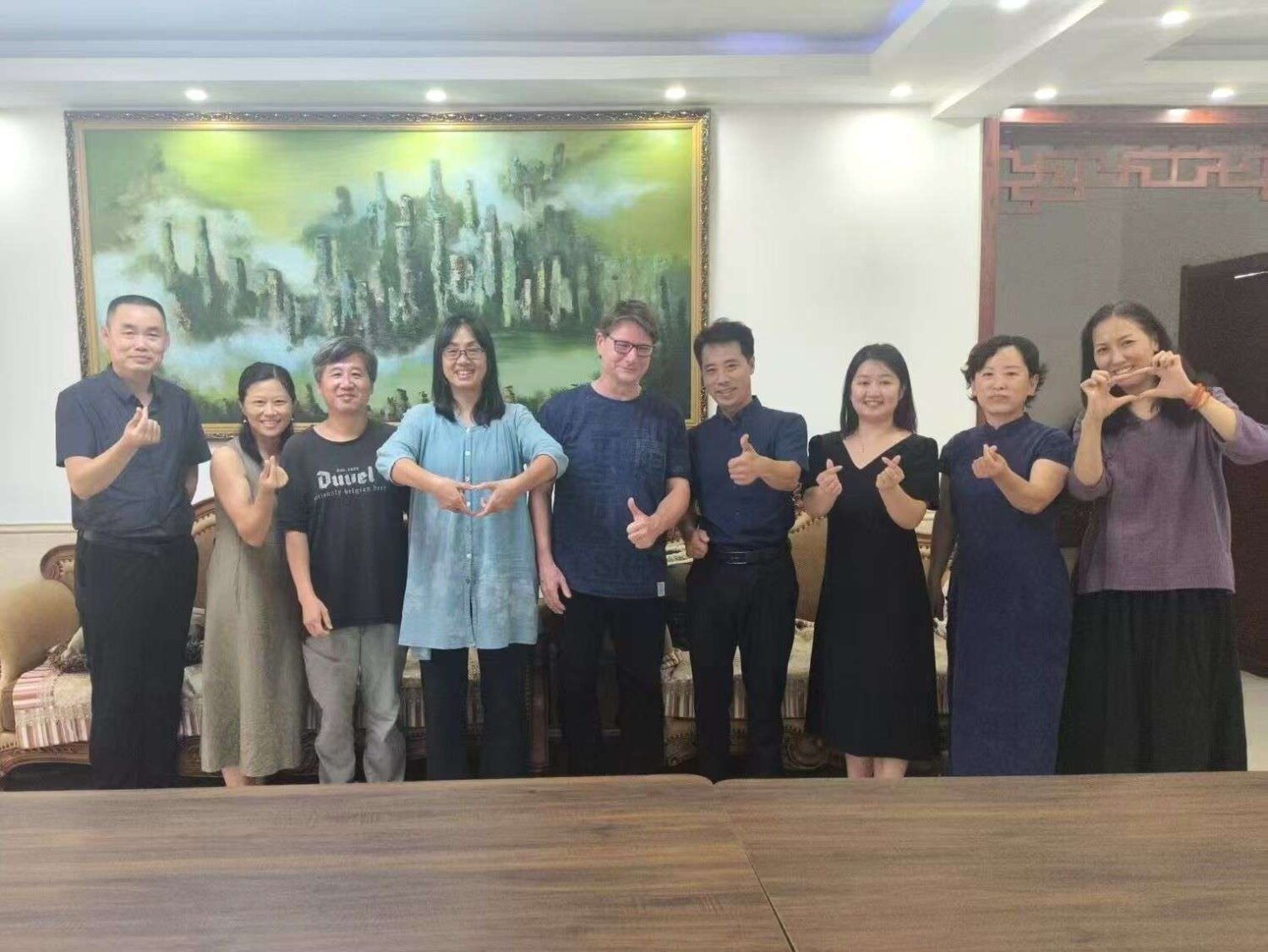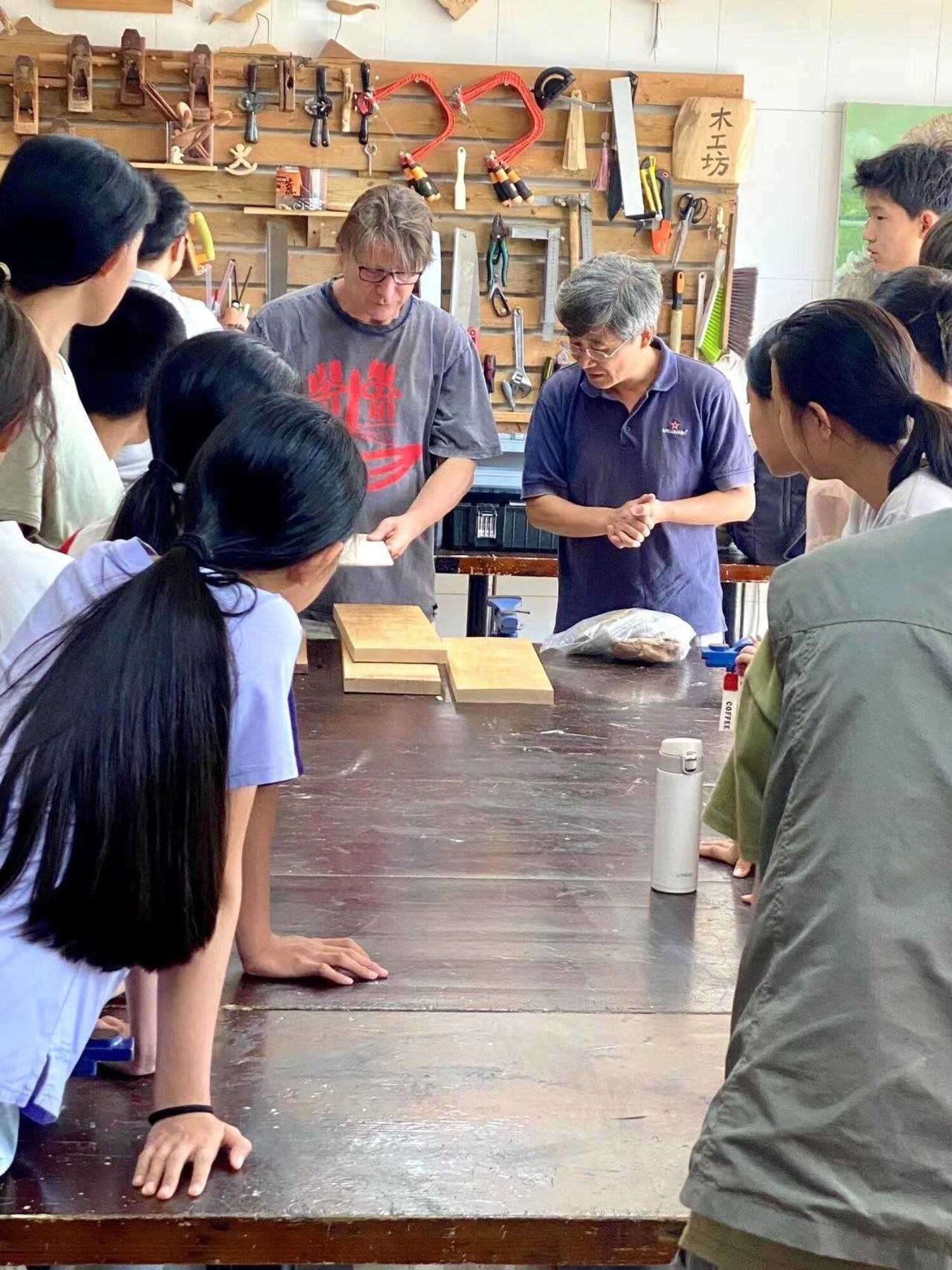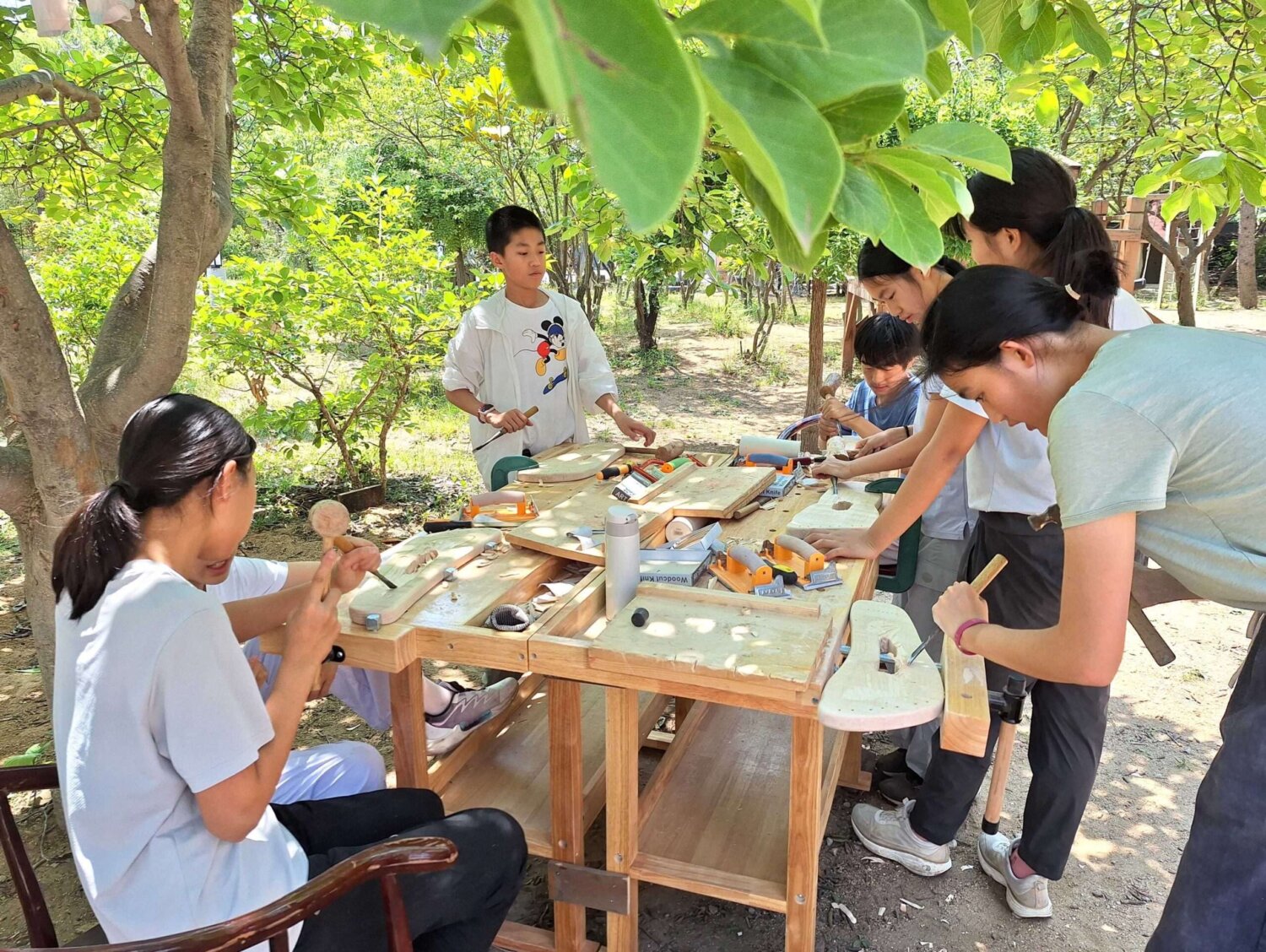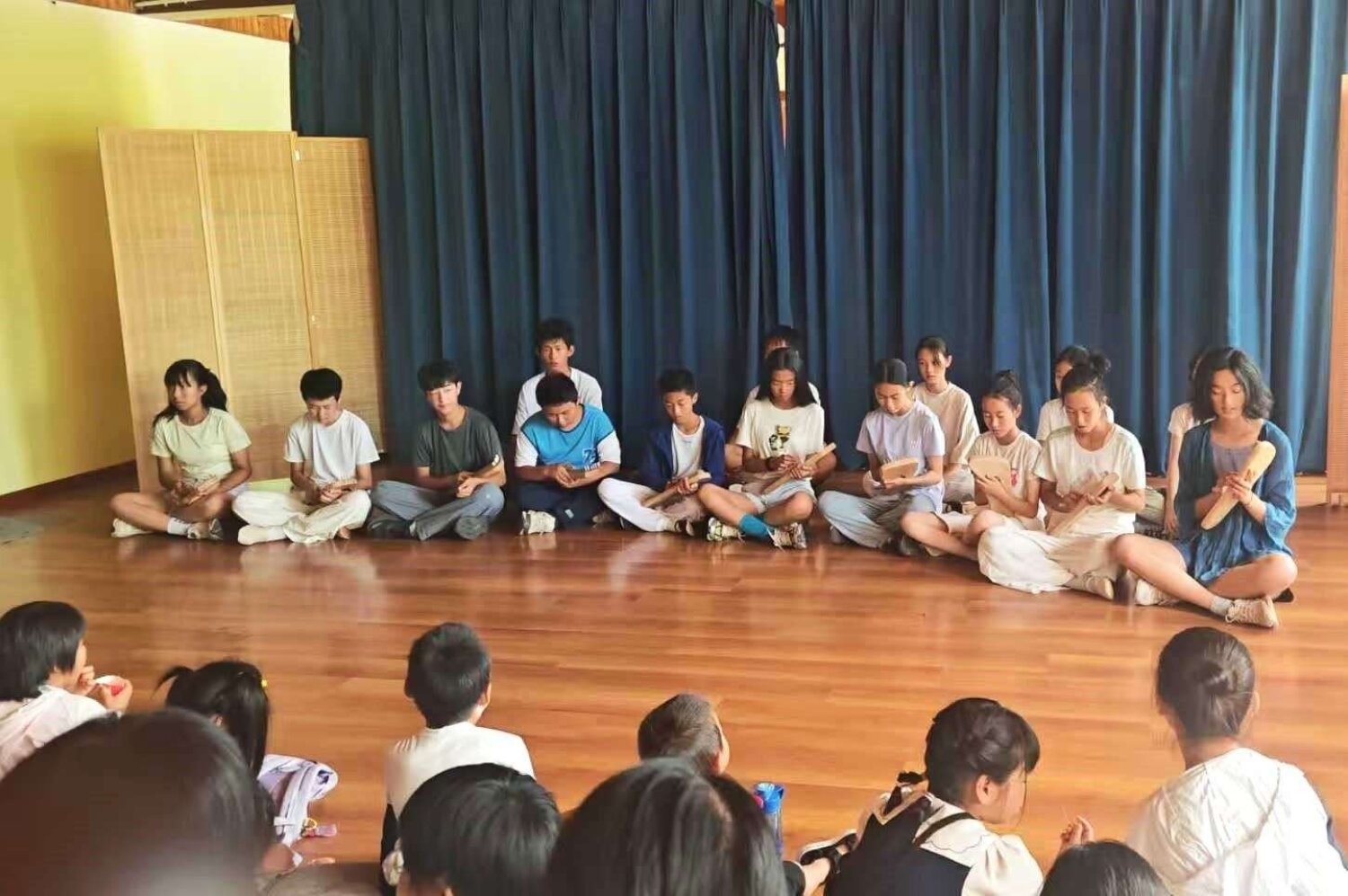A “Choroian” from Swabia Traveling in China
Choroi Association e. V. has been maintaining close contact with various situations in China since 2017. We are now supporting the establishment of a social therapy program in Nanjing with our own musical instrument workshop and a prospective Choroi musical instrument service center for Asia.
Report and photos: Steffen Klepzig, workshop manager at Karl-Schubert-Gemeinschaft e. V., Filderstadt (Germany) and board member at Choroi e. V.
The historical uniqueness of China
China has 5,000 years of cultural development, often centuries ahead of European development. One phenomenon here is that they sought little contact with the outside world, being self-sufficient. The Great Wall of China is a good example! Not only did the country wall itself in, but so did the cities (e.g., the 60 km city wall of Nanjing) and even simple old farmhouses.
The Opium Wars (mid-19th century) were particularly tragic in Chinese history: England sought high-quality tea (and silk) and finally extorted it by opening concession ports (five after the first Opium War, eleven more after the second). In return, England pumped vast quantities of opium into China to balance trade (!). The consequences were tragic; Steiner even speaks of karmic aftereffects (GA 173). I myself visited an exhibition in Nanjing in 2018 and learned about the long-term consequences of opium abuse that lasted for generations!
The last concession port was Hong Kong (originally negotiated endlessly, but then until 1997). The Opium Wars were a profound turning point, as the mistrust of foreigners was cruelly confirmed. … and they were certainly a very traumatic experience for the Chinese people’s soul (or collective subconsciousness). My impression is that China endures a lot, but I also suspect that it does not forget. Unrestricted forgiveness, at best, is probably more of a Christian achievement …
But what is it like to land in China today?
I arrived in Shanghai (literally: city above the sea), a megacity with an estimated population of 24 million! It covers an area larger than the entire German Ruhr region and is more than twice the size of Germany’s Saarland – not to mention the population!
A mirror of the modern age! In principle, almost everything is digitalized and runs via apps. Even small things are paid for via payment functions, even the donations in the temples. The infrastructure is perfect, train stations are located on the periphery and function like airports (including passport and baggage controls). You wait in the hall and check in above the platform before the train arrives – no standing on the platform. The traffic is very quiet, I estimate at least 50% of the cars and almost 100% of the scooters are electric. E-cars are exempt from registration fees, while combustion cars pay a hefty fee (€13,000). The traffic lights show the waiting time in seconds; if you are driving with a navigation system, you will also see this countdown and then hear a small signal tone three seconds before green. However, I did not recognize a logic in the traffic flow, namely in the intermediate traffic of scooters and cars.
When I asked, I was told that everyone looks out for each other – but it still struck me as strange, even though I didn’t see any accidents. People don’t say thank you when someone gives them right of way, but they don’t expect thanks either…
And time and time again, you leave the hustle and bustle of the city and end up in quiet temples, spacious parks or Chinese gardens full of tranquillity! Surprisingly, this type of Chinese garden is probably only found in the South, i.e. south of the Yangtze.
Where have I been apart from Shanghai and what have I done?
After a day in Shanghai (the Bund, the colonial district, Yu Yuan, the Chinese quarter, and Pudong, the new side across the Mother River), we took the express train (75 min.) about 300 km west along the Yangtze River to Nanjing (approx. 6.5 million inhabitants and repeatedly former capital, literally: southern capital – in contrast to Beijing, literally: northern capital).
I had already been to Nanjing in 2018 (at that time together with the former managing director of Choroi-Vertriebs GmbH, Christoph Akeret), and Ms. Yuan’s curative education school (Rainbow Bridge) has since moved to a beautiful village location just outside the city. The regional government has decided to transform these villages into a spa and recreational area, with hot springs nearby. In the middle of this newly designed area, Ms. Yuan was able to take over the buildings of a former Waldorf school.
Her firm intention and plan (and I have no doubt that it will be implemented) is to turn the school into a workshop for people with assistance needs. She is a principal, teacher, has been a member of parliament for a while and also works in her own company. Wolfgang Seel (former Choroi employee from Münzinghof, Germany) was on-site in 2019 and 2024 to accompany the school and workshop perspective. He built metal chimes. My focus was now on the production of wooden bars i.e. a wooden xylophone, especially with regard to sound and vibration phenomena (including vibration nodes) and tunability.
With modest machinery and a skillful and extremely interested teaching staff, this was achieved in three days. There were blocks of teak (for the bars) and maple (for carrying the bars). Of course, there was always the question of what work the people with assistance needs would be able to do later. The design of the sound box (with an ingenious floor system) remained in theory – simply due to the limited machine options. However, this has since been implemented.
A bakery (with delicious products) and the school garden (organic and for daily meals) are still under construction on-site.
For three days, the focus was on highly productive work, followed by short excursions to Nanjing (the former Imperial Lake and Nanjing’s old town) in the evenings. Naturally, these were always accompanied by a delicious dinner.
During my last visit to Nanjing in 2018, I also met Mr. Awen: a trained nurse, a very talented craftsman, and at that time a consultant for educational institutions. When he heard about my travel plans, he asked me to make sure I met him. He is now in Heze, about 600 km north of Nanjing, where he is actively involved with a center for autistic people (Tonghua Autism Caring Center). So we took the night train in a classic couchette car to Heze and were greeted with joy at the train station in the morning.
Although it was Saturday (and actually a day off), Mr. Awen had nevertheless “condemned” everyone to a day of work, which, as he reported, was not met with great enthusiasm. When we arrived at the center, there was no sign of this at all – quite the contrary! Of course, there was also a sense of curiosity, as many of the people employed there had never met a European in person before. Not only the young men with special needs (all between 20 and 30 years old) who live and work there, but also the entire staff were waiting (at 9 a.m.). A total of about 20 people were now happy to show me the reclaimed land (I saw pictures from the beginning, it was really wasteland) that they had taken over in 2017! The organic garden/vegetable area, then the workshops, kitchen, bakery, art workshop. Two to three times a year, well-known calligraphers come and design large ribbons, which are auctioned off for the benefit of the facility.
Mr. Awen himself has set up a flute workshop where he makes his own flutes as well as flutes that are quite similar in appearance to the Choroi flute but differ in sound.
We discussed this openly and will work together on further perspectives and possibilities.
In the afternoon, I was able to give a presentation on Karl Schubert and the Karl Schubert Community in Germany. Afterwards, there were some very interesting questions (including on dealing with sexuality among people with assistance needs). The main sponsor also joined the colleagues. The entire day was of course recorded in sound and image by a member of staff on her cell phone.
Ms. Li from mercurius/cn was also present in Heze, and she had specific questions about the flutes.
On Sunday, I took the express train (approx. 500 km) back to the coast to Qingdao (also around 6 million inhabitants). There, I was greeted at the hotel by the headmistress of the Waldorf School, Ms. Li. After a quick check-in, I went to lunch nearby with some of the teaching staff and parents (the parents’ association).
The Waldorf School in Qingdao is located just outside the city, flanked by the picturesque foothills of the Pearl Mountains. From Monday to Wednesday, we worked with the 6th and 7th grades at the school to build small string instruments. The strings were provided by mercurius/cn, and I had sent the pegs in advance. I had brought a template for the scale length and holes with me.
Due to the limited number of string sets and wooden boards (maple), I had already pointed out in advance that we would be working in pairs. On Monday, I explained my plan to the students: first, drill the holes for the pegs and strings according to the template, then move on to the free design of the outer shape.
The task was undertaken with great enthusiasm, accompanied by the workshop teacher. The following day was spent designing and crafting the sound hole and sound bowl (now guided by the outer shape to the inner shape) – and on the last day, the surfaces were refined. In the end, eleven wonderfully individually designed small instruments were created. We were also able to string one instrument and thus make it sound.
During the feedback in the presence of the principal Ms. Li, I pointed out the actual process: starting with the social task of finding pairs and continuing to create and work together in pairs. This can simply be described as a craft – but also as a social-artistic process. In this way, not only were manual skills deepened, but also (according to J. Beuys) social-artistic qualities were developed.
It was great to experience the young people with joy and enthusiasm! And by the way – not a single cell phone was taken out during the entire time (except mine for documentation), there is a cell phone ban for the students at the school and I never had the impression that the cell phones were missed – even after school was over this was not an issue, on the contrary: there was still plenty of frisbee playing …
A small addendum: Before the start of the summer vacations, the 6th/7th grade organized a monthly celebration for the school with the now completed instruments.
At the end of the school year, I was also invited to give a short lecture on curative education and social therapy (it was June 18!) and specifically on the choroi (its history, sound, and construction principles). About 20 people were present in the school hall, but over 1,000 watched the livestream… Here, too, very specific questions were asked about anthroposophic social therapy, including the various training opportunities. A recurring theme in both lectures (in Heze and Qingdao) was: not to define people by their limitations or disabilities, but to see through the ‘disability’, to simply treat them as human beings, to accompany them and to support them according to their abilities.
At the end of my school activities, I had one more day off in Qingdao, which I spent visiting the old town. Qingdao also has a brief German history dating back to the beginning of the 20th century. The existing Art Nouveau buildings are often used as backdrops for the film industry, and you will often find people taking photos of each other at certain locations (film motifs).
Long before the trip (during the Christmas season), I “accidentally” came across C. G. Jung and the sinologist Richard Wilhelm, who had worked as a missionary in Qingdao for more than 20 years at the beginning of the 20th century. He subsequently became the founder and long-time director of the German-Chinese Institute in Frankfurt (Germany) – his statement at the end of his life was that his greatest achievement had been not to have converted a single Chinese person. A good role model!
We spent the last day in Shanghai again, this time in Zhujiajiao, the picturesque water town. That was original folklore. By the way: you can always see (mostly young) women in classic Chinese dresses in selected places in the various cities to present themselves for social media. Tradition and modernity are living in China!
What remains
The infrastructure is incomparable to that in Germany! In China, you would never rebuild a station in a city center for decades. They move to the periphery, the tracks are newly built, usually on stilts, which reminded me a little of Carrera railroads. When you leave the station, you don’t rumble over a romantic siding architecture surrounded by freight and local traffic. Compensation for building land or resettlement is quite generous, usually families are given apartments in the cities based on the number of people living there, often more than necessary, and there is already the expression of resettlement millionaires (income from rentals).
Waldorf schools are financed, as is usually the case in this world, through private school fees. Curative education schools receive a small amount of financial support from the state, with more extensive support being provided to institutions for people with physical disabilities. However, people with mental disabilities also receive support, which is then paid to their parents or, in adulthood, directly to the schools or workshops. In principle, the main financing is provided through a personal budget.
The omnipresent spirituality is fascinating. Probably very few Chinese people would describe themselves as religious (in our sense of the word). Nevertheless, a mixture of Buddhism, Taoism, and the wisdom of Confucius is deeply rooted in Chinese culture. Chinese cuisine, traditional Chinese medicine, general mindfulness (see, for example, road traffic), qigong in parks, reincarnation – all so natural.
I would like to describe one scene as exemplary, as I found it both remarkable and telling: on the train to Qingdao, a woman dropped her half-full glass water bottle on the floor and it shattered into pieces. Less than 20 seconds later, a woman from the service staff appeared out of nowhere, swept up the glass, left, came back, wiped the floor clean with a damp cloth, and disappeared (I couldn’t really figure out where she came from or where she was going) … Try to imagine this situation happening on a German ICE train.
In the end, I am left with very moving and fulfilling impressions – much more intense than after my first trip. Everywhere I went, I was welcomed with warmth and hospitality by people imbued with a zest for action and a pioneering spirit. I would also like to express my sincere gratitude to my translator, Mr. Liu, for his unobtrusive yet ever-present and witty accompaniment!
And – at no point during my travels did I ever get the feeling that people were lacking anything – quite the opposite! However, it helps enormously to take off your Eurocentric glasses when visiting China …

